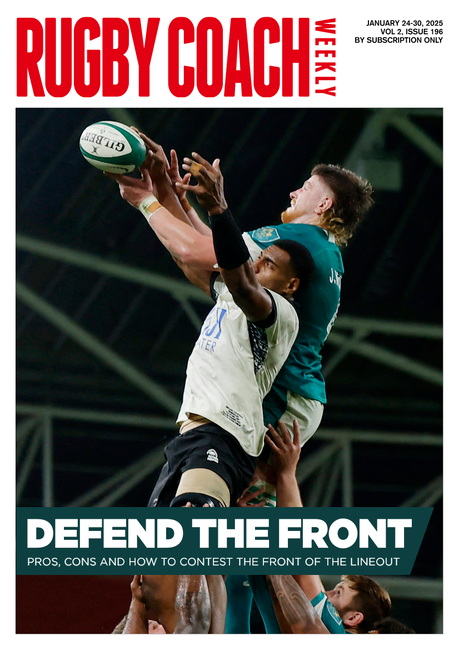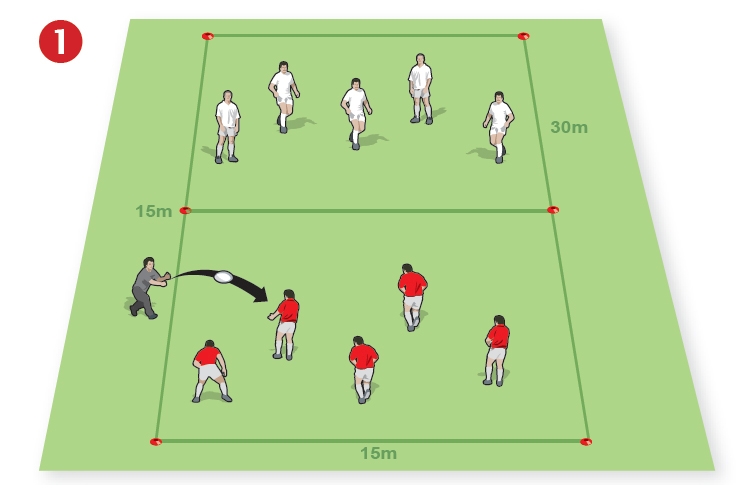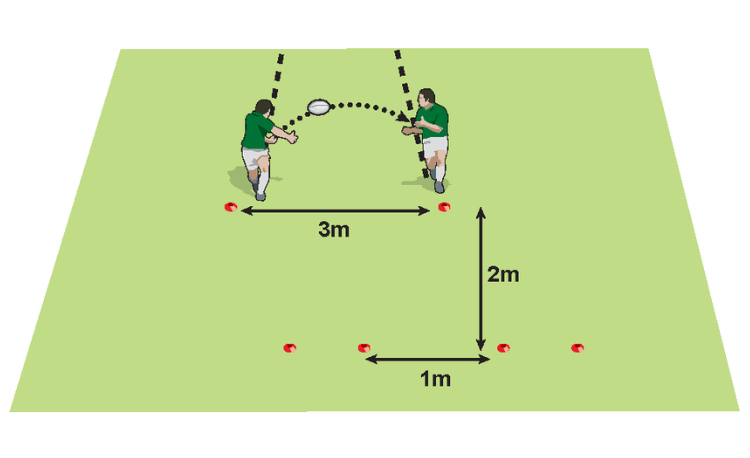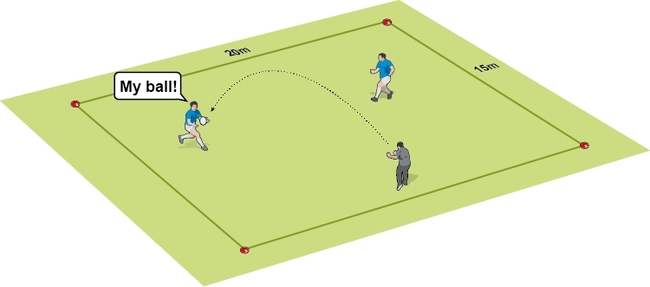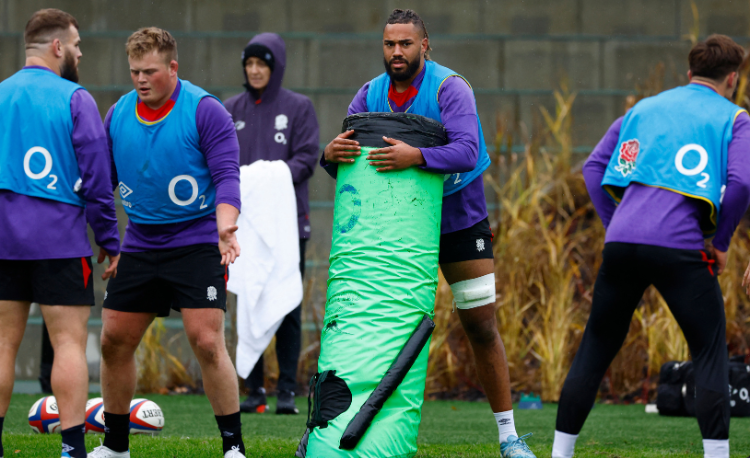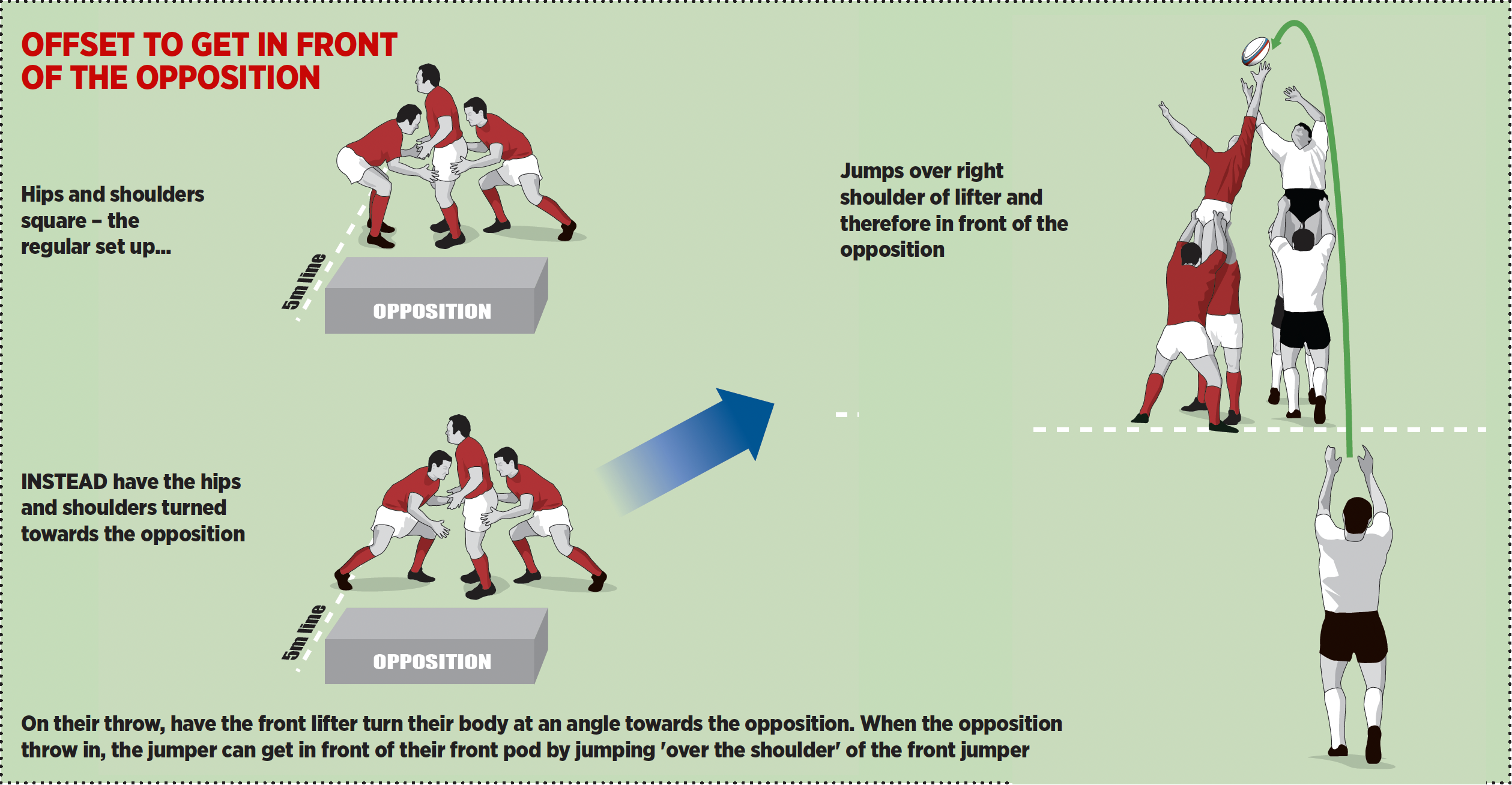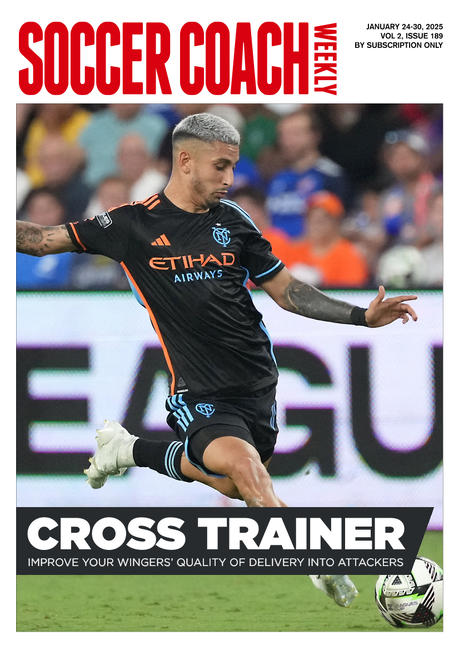Kicking further with a spiral punt
Kicking & Catchingby Doug McClymont
By changing the angle of the ball and the foot position your kickers will be able to punt the ball further.
There are two main types of kick used by the kickers in open play:
Though there are benefits from the spiral kick that might outweigh the drop punt, the changes these players might have to make might not add value to their game. But it is worth a try at least.
The main advantage of a spiral kick is that it fl ies further, thus increasing the length of the kick. The catcher of the ball will find the kick more difficult to field.
First, the ball is spinning around its long axis, a torpedo shape which is harder to catch than a tumbling ball.
Second, the spin imparted and shape of the flight means that the ball fl ies further at the last moment, often fooling the unwary catcher.
With the emphasis in the game on kicking the ball infield, pinpoint accuracy is not such an issue. The length of the kick and causing problems for the catcher are. Therefore your kickers should working hard at employing the spiral kick and learning how to kick it further.
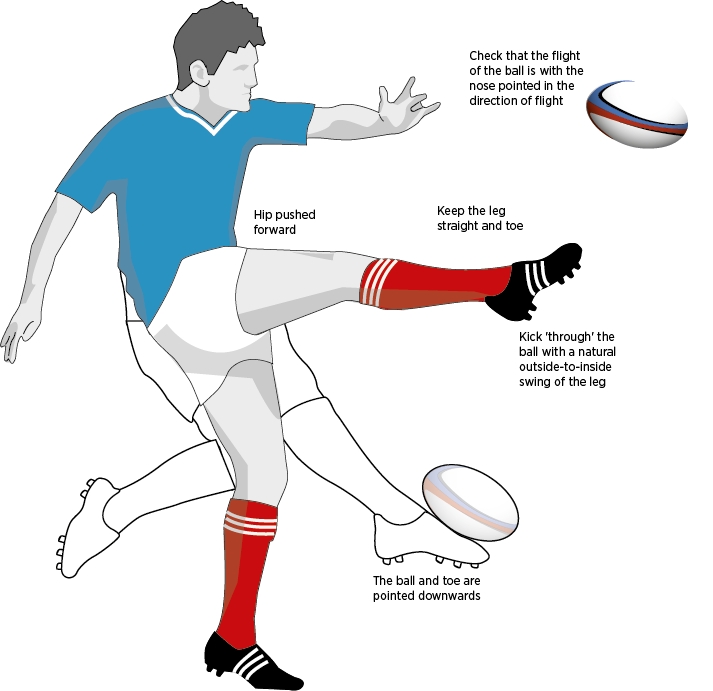
Though many players can “naturally” kick a spiral punt, there are specific actions to the kick which can be worked on to add more accuracy and distance.
To gain the full advantages of the spiral kick the player must learn to spin the ball off his foot. For those of us who are right footed it is easier to impart spin in a clockwise direction, and vice versa of course for a lefty.
As the ball is kicked the foot swings across from outside to inside and is a quite natural action. The hard part is putting the ball in the correct nose down position at contact to gain the angle of attack advantage at the end of the flight. To do this the ball must be kicked earlier in the foot swing so that both the ball and the toe of the foot are pointing toward the ground at contact.
This requires the player to push the hip forward and consciously keep the toe down until contact is made with a straight leg.
Hip extension or pushing the hip forward is caused by contraction of the gluteal muscles, the muscles in the backside. Stand, tighten the bum muscles strongly and the hip on that side will push forward. It is an essential position in all kicking, especially of the support leg. It provides stability in any case but in this one keeps the foot low and the kicking leg straight.
Many kickers want to know why the ball travels further and you need to justify your methods. Here are the reasons for the extra length of the spiral punt.
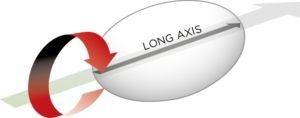
The rugby ball is oval, and the line from one end to the other is called the long axis, like an axle. If the ball is lying on its side a line from end to end is longer than any other measurement, and is called the long axis, a line from top to bottom would be the vertical axis, and it would be the transverse axis if it went through the ball from side to side.
When the ball is in the air it rotates about one or a combination of these axes and commonly we deliberately spin the ball about the long axis, in the spiral pass and in the lineout throw because we know that when the ball spins in that fashion it goes farther and resists any changes caused by the air.
This resistance to change is called inertia and enhances accuracy in the pass and the throw in. When the ball is kicked with spin about the long axis it also has inertia and tends to resist change and we can utilize this characteristic to our advantage in tapping into one of the features of aerodynamic lift.
When the ball spins about its long axis, it gains an aerodynamic advantage, which increases accuracy and distance. To take full advantage of aerodynamic lift and increase range/distance the ball should be kicked to impart spin.
At impact the kicker should kick across the face of the ball with the top of the foot – with the ball pointed forward slightly toward the ground. The ball then leaves the foot, spinning about the long axis in a nose down position and kept in that position by the inertia of the spin.
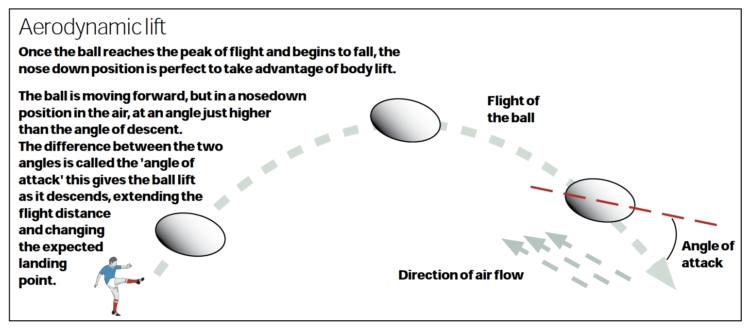
In the first half of the flight as the ball rises to the peak of flight everything looks quite normal. However once the ball reaches the peak and begins the fall earthwards the nose down position is perfect to take advantage of body lift, just like the shuttle or your average jet airliner coming into land.
The ball is moving forward, but the nosedown position in the air, so is at an angle just higher than the angle of descent, the direction of fall. The difference between the two angles is called the angle of attack and it is this angle that gives the ball lift as it descends, changing the expected landing point by extending the flight distance.
The waiting player, who has noted the flight characteristics and positioned himself accordingly, suddenly finds himself back pedalling quickly as the ball floats past overhead providing not only greater distance of the kick, but just as importantly providing more time for a chaser because the receiver has to turn and retrieve a bouncing ball.
SPIRAL KICKS GO FURTHER
There are two main types of kick used by the kickers in open play:
- The spiral, torpedo or screw kick which spins around its long axis.
- The drop punt, which is kicked on its point and tumbles end over end.
Though there are benefits from the spiral kick that might outweigh the drop punt, the changes these players might have to make might not add value to their game. But it is worth a try at least.
The main advantage of a spiral kick is that it fl ies further, thus increasing the length of the kick. The catcher of the ball will find the kick more difficult to field.
First, the ball is spinning around its long axis, a torpedo shape which is harder to catch than a tumbling ball.
Second, the spin imparted and shape of the flight means that the ball fl ies further at the last moment, often fooling the unwary catcher.
With the emphasis in the game on kicking the ball infield, pinpoint accuracy is not such an issue. The length of the kick and causing problems for the catcher are. Therefore your kickers should working hard at employing the spiral kick and learning how to kick it further.
LEARNING TO SPIRAL KICK

Though many players can “naturally” kick a spiral punt, there are specific actions to the kick which can be worked on to add more accuracy and distance.
To gain the full advantages of the spiral kick the player must learn to spin the ball off his foot. For those of us who are right footed it is easier to impart spin in a clockwise direction, and vice versa of course for a lefty.
As the ball is kicked the foot swings across from outside to inside and is a quite natural action. The hard part is putting the ball in the correct nose down position at contact to gain the angle of attack advantage at the end of the flight. To do this the ball must be kicked earlier in the foot swing so that both the ball and the toe of the foot are pointing toward the ground at contact.
This requires the player to push the hip forward and consciously keep the toe down until contact is made with a straight leg.
How does a player “push his hip forward”?
Hip extension or pushing the hip forward is caused by contraction of the gluteal muscles, the muscles in the backside. Stand, tighten the bum muscles strongly and the hip on that side will push forward. It is an essential position in all kicking, especially of the support leg. It provides stability in any case but in this one keeps the foot low and the kicking leg straight.
WHY DOES A SPIRAL KICK GO FURTHER
Many kickers want to know why the ball travels further and you need to justify your methods. Here are the reasons for the extra length of the spiral punt.

The rugby ball is oval, and the line from one end to the other is called the long axis, like an axle. If the ball is lying on its side a line from end to end is longer than any other measurement, and is called the long axis, a line from top to bottom would be the vertical axis, and it would be the transverse axis if it went through the ball from side to side.
When the ball is in the air it rotates about one or a combination of these axes and commonly we deliberately spin the ball about the long axis, in the spiral pass and in the lineout throw because we know that when the ball spins in that fashion it goes farther and resists any changes caused by the air.
This resistance to change is called inertia and enhances accuracy in the pass and the throw in. When the ball is kicked with spin about the long axis it also has inertia and tends to resist change and we can utilize this characteristic to our advantage in tapping into one of the features of aerodynamic lift.
When the ball spins about its long axis, it gains an aerodynamic advantage, which increases accuracy and distance. To take full advantage of aerodynamic lift and increase range/distance the ball should be kicked to impart spin.
At impact the kicker should kick across the face of the ball with the top of the foot – with the ball pointed forward slightly toward the ground. The ball then leaves the foot, spinning about the long axis in a nose down position and kept in that position by the inertia of the spin.

In the first half of the flight as the ball rises to the peak of flight everything looks quite normal. However once the ball reaches the peak and begins the fall earthwards the nose down position is perfect to take advantage of body lift, just like the shuttle or your average jet airliner coming into land.
The ball is moving forward, but the nosedown position in the air, so is at an angle just higher than the angle of descent, the direction of fall. The difference between the two angles is called the angle of attack and it is this angle that gives the ball lift as it descends, changing the expected landing point by extending the flight distance.
The waiting player, who has noted the flight characteristics and positioned himself accordingly, suddenly finds himself back pedalling quickly as the ball floats past overhead providing not only greater distance of the kick, but just as importantly providing more time for a chaser because the receiver has to turn and retrieve a bouncing ball.
Newsletter Sign Up
Coaches Testimonials

Gerald Kearney, Downtown Las Vegas Soccer Club

Paul Butler, Florida, USA

Rick Shields, Springboro, USA

Tony Green, Pierrefonds Titans, Quebec, Canada
Subscribe Today
Be a more effective, more successful rugby coach
In a recent survey 89% of subscribers said Rugby Coach Weekly makes them more confident, 91% said Rugby Coach Weekly makes them a more effective coach and 93% said Rugby Coach Weekly makes them more inspired.
Get Weekly Inspiration
All the latest techniques and approaches
Rugby Coach Weekly offers proven and easy to use rugby drills, coaching sessions, practice plans, small-sided games, warm-ups, training tips and advice.
We've been at the cutting edge of rugby coaching since we launched in 2005, creating resources for the grassroots youth coach, following best practice from around the world and insights from the professional game.

